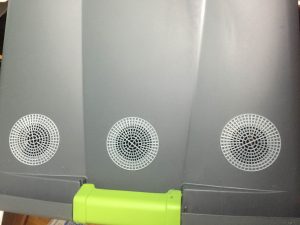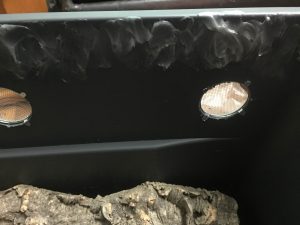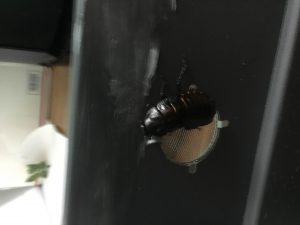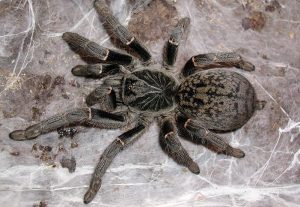Hissing Cockroach Starter Colony
DIY, Feeders No Comments »The Madagascar Hissing Cockroach (Gromphadorhina portentosa) or also known as hisser roaches are one of the largest cockroach species in the world. They are well known for their size and hissing noises that come out of them. The Madagascar Hissing Cockroach makes an ideal insect pet due to it being easy to care for, inexpensive and can even be produced to be great feeder insects. Adults reach sizes of 3 to 4 inches in length, can live to be a few years old and they are known to produce like crazy! Below we have compiled a tutorial for you to be able to create your own Hissing Cockroach Starter Colony!
Step 1: Getting the right size enclosure for your hissers! The rule of thumb is that you use 1/2 of a gallon per pair of hissing roaches. The pictures below are for 70 pairs (140 hissing roaches). I went with a 60 gallon plastic container/enclosure because I am trying to get my hissers to breed.
Step 2: Drilling holes into your container/enclosure. You can either drill hundreds of small little holes all around the top rim and lid or you can do what I did which is drill 2″ vents all around the top part of the enclosure. Make sure you have proper ventilation. Note that I did drill starter holes so that my 2 inch drill bit would easily align each cut accordingly. Plastic can be slippery with a drill bit!
Step 3: Make sure your vents fit nicely. These are 2″ vents that I bought at my local hardware store for dirt cheap. they come in a dozen bag for about $3. I also ended up experimenting with 4″ inch vents for better cross ventilation as shown in the 2nd picture thought his is not required.
Step 4: Filling up your container. Though you can go and use egg cartons and empty paper towel rolls I prefer using a mix of wood chips and substrate for the bottom of my enclosure and lay down bark pieces for the hissers to hide under or crawl over. Be sure to also have a nice food dish and water bowl readily available.
Step 5: Unlike many other cockroach types, the Madagascar Hissing Cockroach can climb plastic and glass with no trouble at all. To prevent this from happening you simply have to coat about 2″ of the inner top of the container with some petroleum jelly. This prevents them from being able to climb out of your enclosure as shown in the picture. A secure lid is also a plus when making your hisser colony.
Step 6: Putting your roaches in and making sure they have plenty to feast on and drink. I recommend you using water crystals for your hissing cockroach starter colony as this has less chance to evaporate due to the high heat of the enclosure. A diet of steady greens, fruits and even cat kibble should be perfect to keep your hissers healthy, fat and happy.
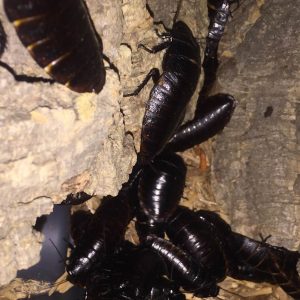
Adult Madagascar Hissers
Pro Tip: Though hissers do well in regular room temperature, they do grow and breed much faster the warmer it is. You can heat your container/enclosure to up to 95 degrees and have a very productive colony! For this you can use an external heat source such as a heating pad or heating lamp.
Sexing: You can tell the gender of your hissers by simply looking at them up close! Males have large horns on their head while females have a much rounder shape to their head. This can be seen as early as 3 months of age.
These simple steps can easily help you in the growth of your colony. For any additional questions or help feel free to reply below in the comments.




